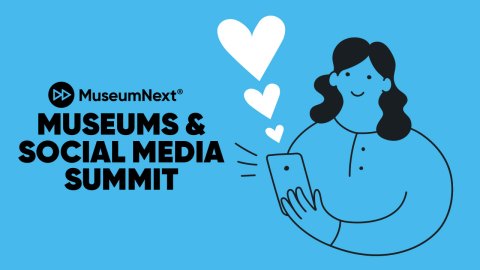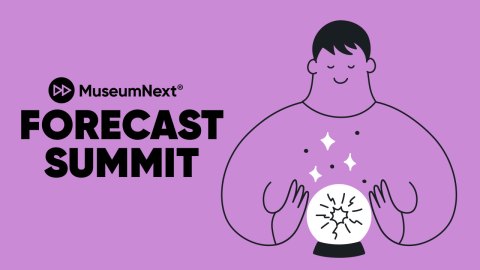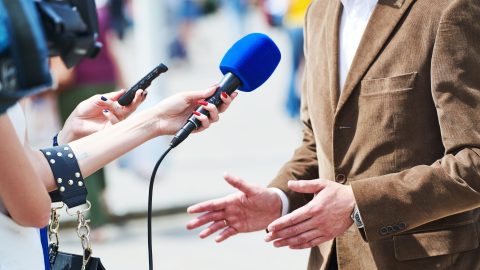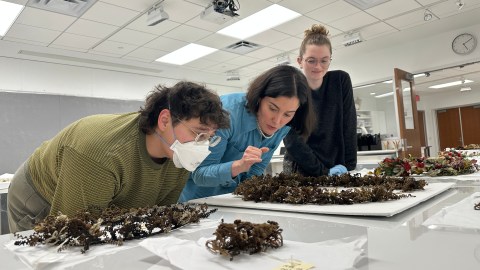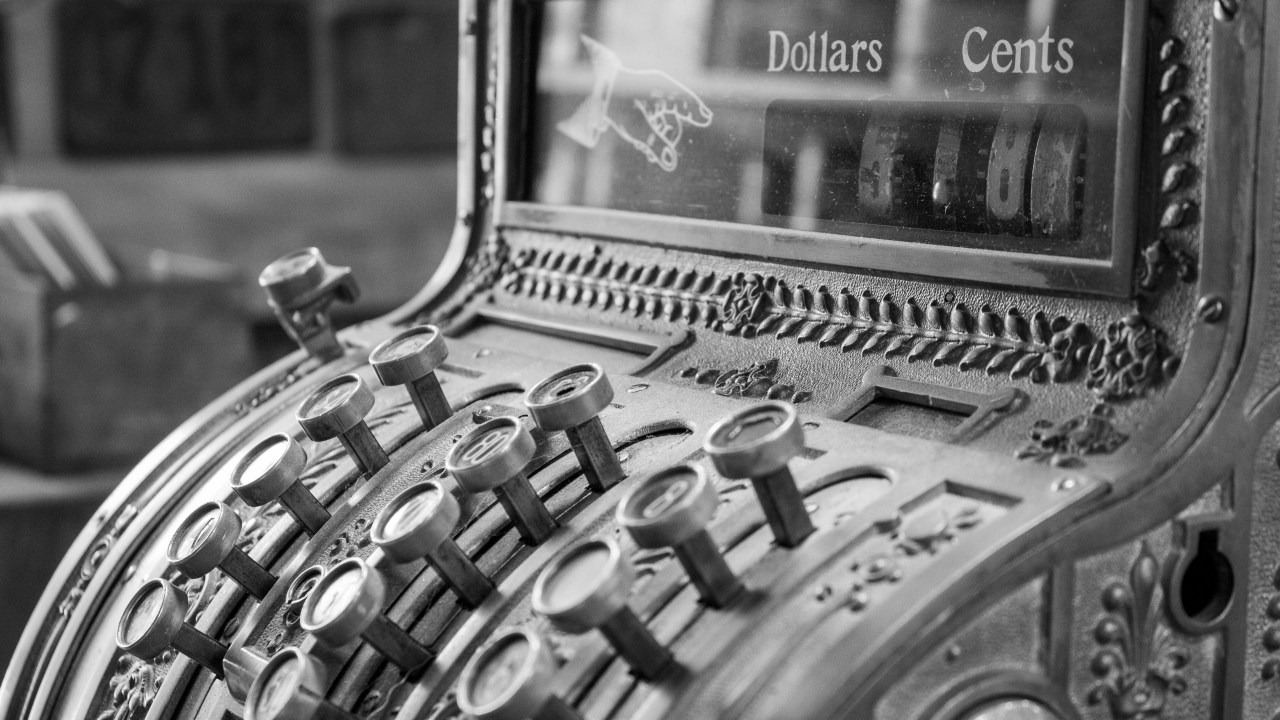
This is the second installment in a series of essays exploring the impact of executive orders and actions on museum income streams. It summarizes what we know about the immediate, accumulating effect of these actions, as well as offering thoughts on how these policies may reshape museum business models in the long term. The series is based on a talk I gave in Los Angeles last month at AAM 2025. If you have not already done so, I recommend you read the first installment, which introduces the series and examines disruptions to government funding.
Keep in mind that this essay was published on June 4—by the next day new policy announcements, lawsuits, court decisions, or other factors may have amplified some of the points in this essay, and rendered others moot. Keep up with new developments by subscribing to AAM Advocacy Alerts, as well as the weekly Dispatches from the Future of Museums newsletter.
–Elizabeth Merritt, VP Strategic Foresight and Founding Director, Center for the Future of Museums, American Alliance of Museums
Some Context
As I mentioned in part one of this series, US museums have decreased their reliance on government funding (local, state, and federal) in recent decades. Constituting about 40% of museum income, on average, in 1989, that figure declined to 24% by 2009, and remained stable for the past 15 years. Over that period, earned income as a proportion of museum revenue held steady, bobbing up and down just a bit from 30% in 1989 to a high near 35% in 1996, sinking to 28% in 2009 and most recently, as documented in the 2024 Museum Board Leadership Report, constituting 32% of museum income.
“Earned income” is a large and diverse bucket. Membership fees, museum store sales, facility rentals and program/education fees typically make up the largest chunks, but many museums also derive significant revenue from food service, special exhibition fees, and royalties. Some museums have cultivated substantial income from non-traditional sources, including the Warhol Museum’s Pop District, the National WWII Museum’s Higgins Hotel and Conference Center in New Orleans, and the Center of Visual Expertise (which provides workplace safety training) at the Toledo Museum of Art.
Overall, the relatively high and stable level of earned income is one aspect of the US museum business model that our international colleagues, for example, in the UK, have sought to emulate as their own government funding shrinks. How is this pillar of museum support faring under the current administration?
EO Impact on Earned Income
Museums’ earning power rises and falls with larger economic tides, influenced by people’s ability and willingness to spend on leisure, travel, and tourism, the capacity of communities to recover from the economic shock of natural disasters, and the cost of goods and services. Here’s a brief tour of current data on those categories.
Leisure Spending
Last month McKinsey & Company released their latest data on US consumer confidence and projected spending. According to that report, 43% of consumers are concerned about rising prices and inflation, 29% about the impact of tariff policies, and nearly a quarter (22%) are worried about being able to “make ends meet.” More than 60% of consumers have either changed or expect to change their spending habits in coming months, and of these, more than half plan to cut back on non-essential spending.
These concerns will inevitably impact cultural consumption as well. Colleen Dilenschneider, of IMPACTS Experience, reports that public intent to visit exhibit-based organizations is down significantly in the first quarter of 2025, which she attributes to a drop in consumer confidence, less leisure spending over all, and the impact on travel. About which, more below. (n.b., IMPACTS will share a mid-year update in July—if you are not already subscribed to this excellent source of information, I recommend you consider becoming a member to access their data and analysis.)
Travel and Tourism
Practical concerns about travel, along with a negative perception of the US as a desirable destination, are fueling a precipitous drop in inbound tourism. Several countries, including Canada, Denmark, Finland, France, Germany and the UK, have issued travel advisories regarding the US, due to harsh immigration enforcement, aggressive examination of travelers’ social media accounts, and harassment of non-binary or transgender individuals. The World Travel & Tourism Council announced last month that the US is on track to lose over $12 billion in international spending this year (about a 15% drop from 2024). Summer bookings from Canada, the top source of international visitors to the US, were down 70% in March compared to last year. Hotel bookings from travelers hailing from Japan, Mexico, and Germany are down as well.
While some museums rely heavily on international tourism, many museums may be more concerned with domestic travel which, according to the WTTC, accounts for 90% of tourism spending. In past times of financial stress (such as the 2008 financial crisis and the COVID-19 pandemic), Americans turned to local travel and “staycations.” Unfortunately, the dismantling of federal support for preparation and recovery could increase the risk of severe damage to local economies, including travel and tourism, in the wake of what may be a particularly bad year for natural disasters.
The 2025 hurricane season is projected to feature a higher than average number of severe storms, and the threat of wildfires expected to rise over the year due to heat, drought, and extreme weather. Even in the best of times, such events can cause massive damage to local economies: in September 2024, Buncombe County in North Carolina saw a 70% decline in tourism due to the damage inflicted by Hurricane Helene. The county lost nearly $600 million in revenue that winter, due to travel, lodging, and related spending, despite over $500 million in government recovery spending. The total long-term costs of helping North Carolina recover from the storm are estimated at $60 billion. Now the president is scaling back federal help for the continued relief of that region. He has terminated hundreds of staff at the Federal Emergency Management Agency, and has talked about eliminating FEMA altogether. States don’t have the personnel, infrastructure, and funding to immediately pick up the slack. The staffing shortage will be made even worse by the gutting of AmeriCorps in April, as young people serving through that program have played a critical role in disaster recovery.
Cost of Materials and Products
The administration’s proposed tariffs have been announced, raised, lowered, blocked, and reinstated by the courts, making it difficult to assess their impact with any precision. Whatever the final decision of the courts, these policies have already had a significant impact on the economy. A wide array of companies, including Nikon, Walmart, Mattel, and Proctor & Gamble, have announced price hikes due to tariff impact. The price of steel and aluminum spiked in the wake of the president doubling tariffs on the metals to 50%. Tariffs on Chinese goods have spiked at over 145% and dropped to 80% as China and the US jockey for economic advantage. Regardless of the final resolution, retail experts expect the tariffs to raise the price of everything from electronics to baby gear. Besides the general impact on household budgets and spending, the resulting price increases would affect museums directly, for example in the costs of:
- Computers, storage devices, electronics used in exhibits and interpretation
- Collections storage cases
- Exhibition construction materials
- Museum store stock
- Operating food services
Sponsorships
Here I’m referring to corporate sponsorships, which offer concrete benefits and promotional value to the sponsor, as opposed to donations, which will be addressed in a subsequent post.
One of the president’s priorities, as expressed in the form of EOs and other actions, is the suppression of DEI policies and actions. In response, some large corporations are already pulling their sponsorships from projects, initiatives, and organizations they fear will put them at risk. For example, Comcast, Anheuser-Busch, and Diageo withdrew their support from San Francisco Pride this year, while Booz Allen Hamilton, Deloitte, Comcast, and Darcars dropped their sponsorship of WorldPride in Washington, D.C. Brendan Carr, the new chair of the FCC, has opened an investigation that may quell sponsorships of public media, including NPR and PBS. Given the drive towards pre-emptive compliance, we might see corporations declining to sponsor other activities and organizations at odds with the values of the current administration.
Bright Spot
While it’s discouraging to see major companies pull back on sponsorships to conform to presidential priorities, many of their peers are reaffirming their commitment to DEI.
- Apple shareholders rejected an anti-DEI proposal, and the company defended its diversity program as an “integral part of its corporate culture.”
- 98% of Costco shareholders repelled an anti-DEI measure and the company’s leadership reaffirmed that “DEI isn’t just a box to check, it’s central to [our] employee strategy and rooted in the company’s core ethics.”
- An Executive VP of Delta stated the company is “steadfast in our commitments [to DE&I] because we think they are actually critical to our business.”
- Sephora continues to commit to a culture of inclusion and belonging, and references their Racial Bias in Retail study as one driver of their equity partnerships with NAACP, the National Coalition on Black Civic Participation, and others.
- Ben & Jerry’s website not only doubles down on DEI; it flat-out refers to dismantling white supremacy.
Admittedly, most of the statements above refer to companies’ internal practices, not to sponsorships per se, but their commitment to their values suggests they may also continue to support nonprofits addressing DEI.
Something to Watch
Organizations incorporated as nonprofits can apply for and receive tax-exempt status from state and federal government. Since 1950, the exception has been UBIT—taxation of income unrelated to the nonprofit’s purpose. A more technical definition of unrelated business income, provided by Herwit & Associates, is “net income derived from a trade or business regularly carried on which does not contribute importantly to the accomplishment of the organization’s tax-exempt functions.” The need to establish connection to mission, and therefore UBIT exemption, leads some museums to document and explain the connection between items in their store and associated objects in the collections.
UBIT is being reexamined, however, from specific issues to more sweeping reform. The tax package approved by the House Ways and Means Committee last month included a proposal to extend UBIT to cover the value of parking and transportation benefits provided to employees, with an exception for churches. This would apply a 21% tax on expenses incurred by nonprofits to support employees. (Another provision, which would have made name and logo royalties taxable has since been dropped.)
Some conservative tax-policy thinkers have proposed that the government revisit UBIT on a much larger scale. Scott Hodge, President Emeritus of the Tax Foundation, has proposed that “rewriting of the tax-exempt rules should include narrowing the definition of “public charity” and subjecting all non-charitable income to the corporate tax rate of 21 percent.” That would include taxing membership fees, program service fees, and some government grants and contracts. According to Hodge’s calculations, this change in tax policy could “raise nearly $40 billion annually in new tax revenues,”—money that could offset the costs of tax breaks to individuals and for profit companies.
Hodge’s proposal is grounded in his argument that nonprofit hospitals are competing with for-profit hospitals—providing the same services with the unfair advantage of tax exemption. (The convergent behavior of nonprofit and for-profit hospitals is a widely recognized issue, though some argue this convergence is driven by for-profit hospitals competing with nonprofit hospitals, and in this way pressuring them to abandon their public services.) If nonprofits generally lean into the development of earned income to replace nonexistent or unreliable government funding, might that create a “doom loop” in which museums are framed as competing with for-profit entertainment companies (ranging from so-called “selfie-museums” to for-profit touring venues that present touring exhibits such as Body Worlds)?
Next Up in This Series
In the next installment, I will examine the impact current executive orders and actions are having on contributed revenue from individuals and foundations. Meanwhile, I would love to hear about your museum’s experiences, and how you are navigating the current challenges. Please share your thoughts, questions, and reactions in the comment section below, and on the Future of Museums Community on Museum Junction.
Yours from the future,

Elizabeth Merritt
VP Strategic Foresight and Founding Director, Center for the Future of Museums, American Alliance of Museums

